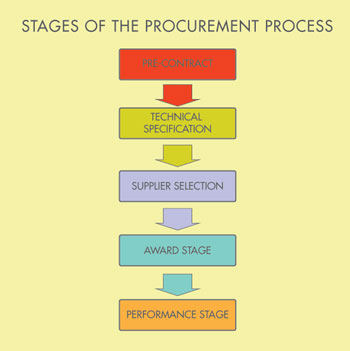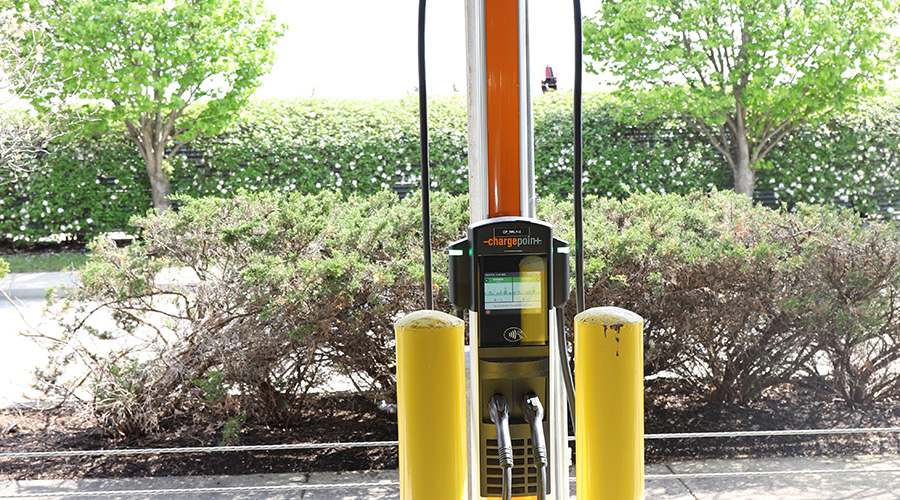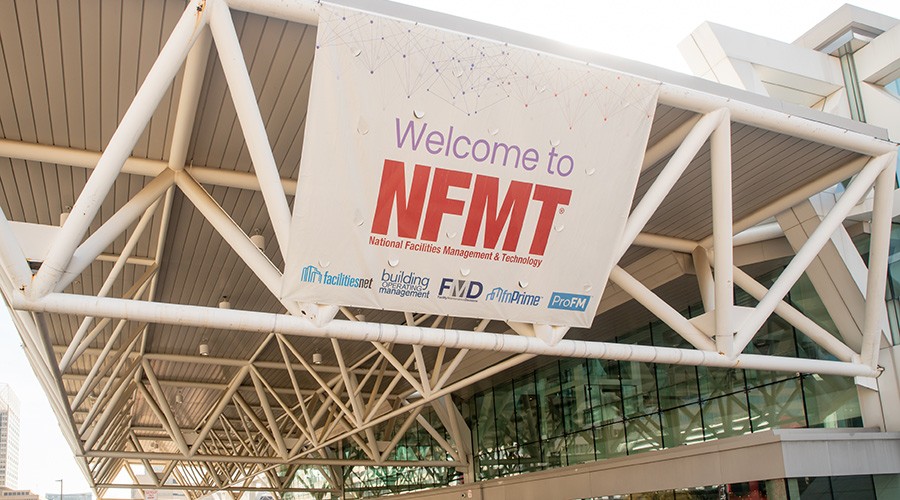Managing Outsourcing: the Pre-Contract Stage, the Facility Manager’s Role
Part 2 of a 5-part article on making outsourcing changes and transactions run smoothly

1. Pre-Contract Stage
The management of the transition project should begin well in advance of the request-for-proposal (RFP) process and continue through the solicitation process, contract development, and the actual transition period, and then for 60 to 90 days after the new services have begun. This will ensure that the plan is on target and commitments are being met. It offers a chance for course correction before any real damage occurs.
Beginning with the end in mind during the pre-RFP release contract development stage, the transition requirements should be created and clearly delineated in the RFP language. The transition language starts with understanding the customer’s needs, translating those needs into requirements, and then developing specifications aligned with the requirements to be included in the RFP. Sufficient information about the facilities needs to be provided in the RFP to allow bidders to make consistent and accurate assumptions about the types, condition, and quantity of asset items to be covered by the service contract. This also allows a more direct comparison of bids and helps ensure that the equipment conditions are accurately allowed for and represented.
At this stage of the game, it is also imperative that the client declare expectations regarding service levels. Additionally, this is the time when both management metrics and key performance indicators (KPIs) should be determined to allow the bidders to fully understand how their performance will be measured. In the actual transition stage, the KPIs will help in developing an effective operational plan. Some examples of typical KPIs include: operating budget to actual performance variance, preventive maintenance (PM) compliance, response time compliance, and preventive-to-corrective maintenance ratio. Often a balanced scorecard of management metrics and KPIs linked to the organization’s strategy leads to successful long-term performance.
The pre-transition strategy should include verification and sharing of the accuracy of the facilities data, asset inventory, and physical condition of the assets by both the existing and new service provider. Much of this data should reside in the computerized maintenance management system (CMMS) or integrated workplace management system (IWMS). It is best to conduct these quality assurance verifications far enough in advance of the existing service provider’s contract expiration that corrections may be made, but not so far in advance that the observed conditions change due to subsequent service activity. This information will also benefit both the new service provider in better understanding his projected investments of labor requirements and financial exposure. The statement of work should be sufficient to ensure that the prospective bidders have all they need to create a complete and realistic proposal.
2: The Facility Manager’s Role
The facility manager should drive the CTM process and therefore lead the CTM team, working in concert with the procurement group. The facility manager may be required to explain some things to the procurement group, including the fact that facility service contracts are very different than purchasing contracts and therefore the purchasing techniques will be different. Another point to be explained might be that techniques such as reverse auctions and such other types of purchasing practices are poor contracting processes for facility management services, as the group is not buying widgets.
A CTM team goal should be to create a strong partnership with all team members. This contracted service could have very expensive impacts on the company’s greatest two assets: its people and properties.
The facility manager should be sure to create a phase-out plan listing all the required activities, who is responsible for the activities, and an associated schedule with activity dates. As well, a risk management plan should be created.
The facility manager should also conduct an initial contract phase-out coordination meeting six months before the end of the current contract and have subsequent status meetings on a bimonthly or monthly basis.
A communications plan should include required notifications and coordination. For example, occupants (customers) will need to be notified about the change in service providers and the fact that they may see an increase in service provider activity during the transition. Another example is security. If the organization requires security badges, and perhaps background checks before those badges can be issued, coordinating with the security department with respect to the oncoming new contractor is critical and should be part of the communications plan.
Teena Shouse, CFM, IFMA Fellow, is vice president of corporate services at Facility Engineering Associates. She has over 26 years of experience in service-related fields, mainly facility management. She can be reached at teena.shouse@feapc.com.
Related Topics:
















